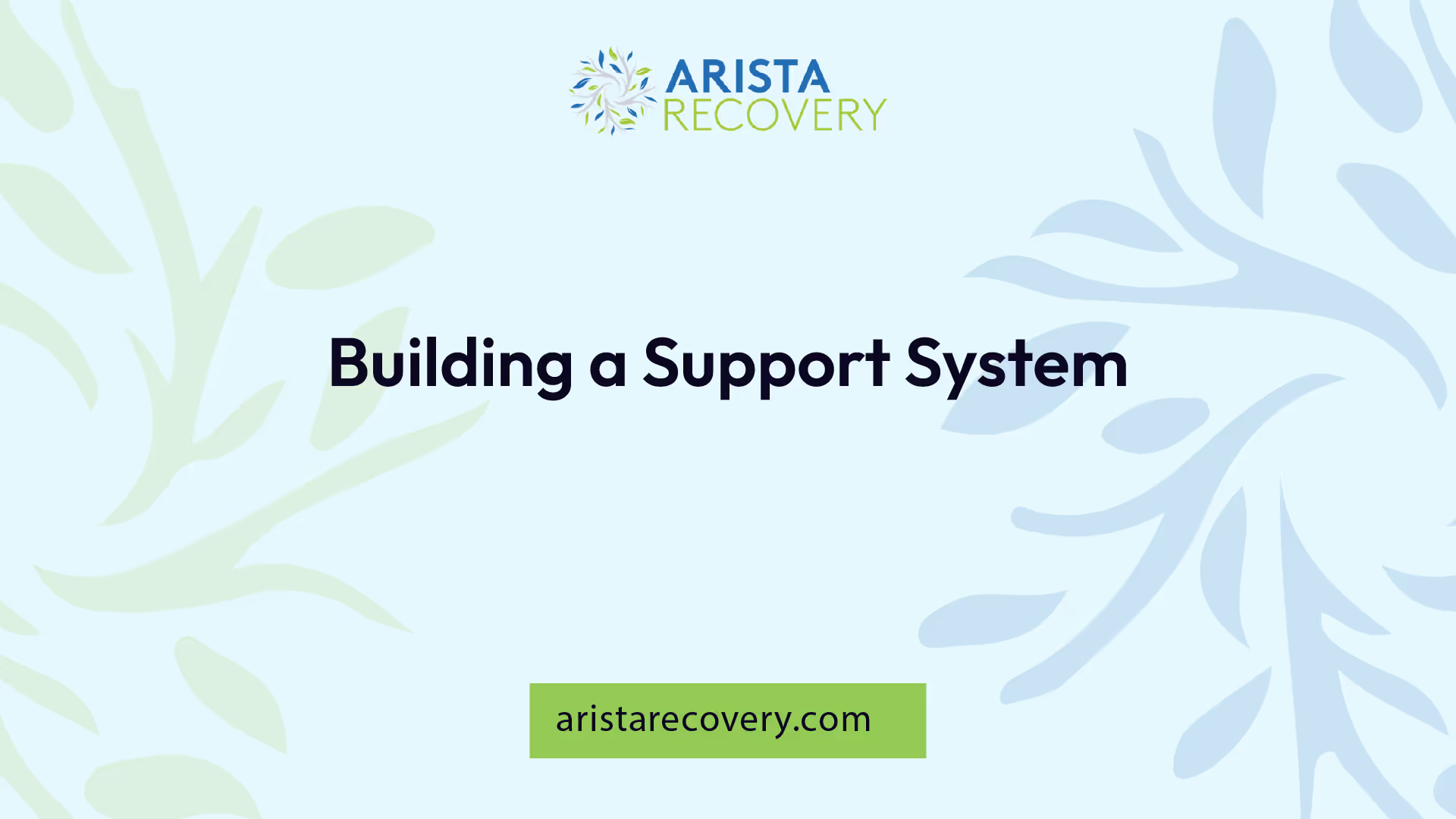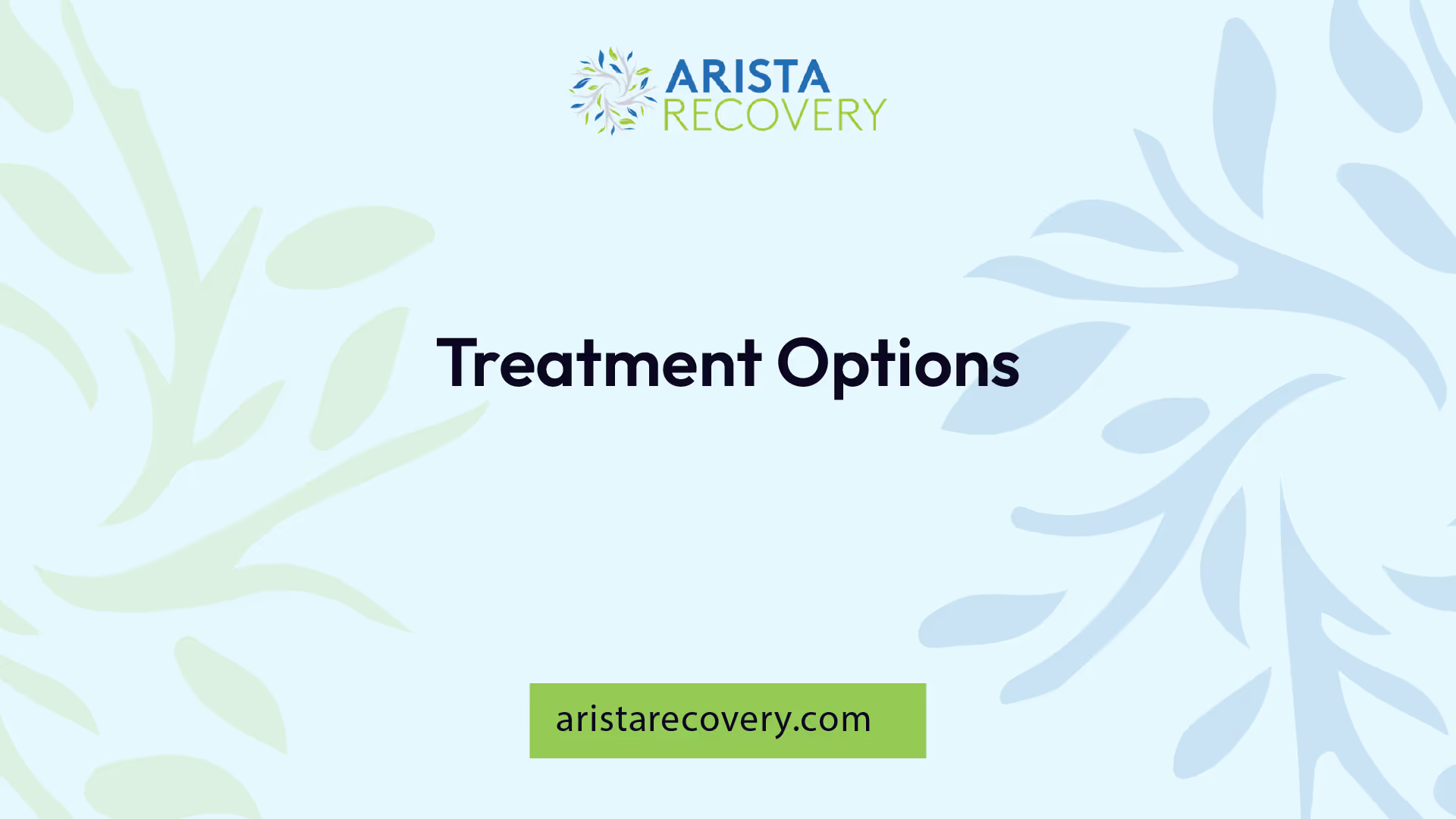Powerful Help for Opioid Addiction in Kansas

Understanding Addiction
When discussing help for opioid addiction, it's crucial to start with an understanding of addiction itself. This includes recognizing the impact of addiction and the challenges faced during the recovery process.

Impact of Addiction
Opioid Use Disorder (OUD) is a widespread problem that affects over 16 million people worldwide and over 2.1 million in the United States. With more than 120,000 deaths annually attributed to opioids, it's clear that the impact of this addiction is devastating. In fact, opioid-related deaths in the US have surpassed those from any other drug in history. Up to 50% of patients on chronic opioid therapy meet the criteria for OUD, emphasizing the urgent need for identifying and promptly treating persistent opioid use and misuse.
Furthermore, in 2020, the SAMHSA National Helpline received 833,598 calls, marking a 27 percent increase from the previous year when it received 656,953 calls. This statistic not only underscores the widespread impact of addiction but also the increasing demand for help and support.
Challenges in Recovery
Recovery from addiction is a challenging journey, fraught with obstacles and setbacks. Among the most common challenges in addiction recovery are:
- Developing new coping strategies: This involves managing stress, anxiety, and cravings. Although challenging and time-consuming, it's essential for establishing a new sense of normalcy in sobriety.
- Addressing trauma and shame: Without the use of drugs and alcohol, confronting deep-seated issues contributing to addiction requires significant effort, time, and bravery.
- Building and repairing relationships: Having supportive social networks is crucial for long-term sobriety. This involves making amends with loved ones and learning healthy communication and trust.
- Overcoming boredom post-rehab: Individuals need to find new ways to spend their time without drugs and alcohol. Engaging in activities like meditation, sports, or hobbies, and enrolling in a sober living program can help create a new lifestyle in recovery.
- Preventing relapse: Cravings, stress, and old acquaintances pose threats to sobriety. Establishing life skills, modifying unhealthy behaviors, and developing a peer support system are crucial elements in overcoming this challenge.
Understanding these challenges is an important step in getting help for opioid addiction. By recognizing the difficulties ahead, individuals can better prepare for the recovery process and increase their chances of long-term success.
Building a Support System
In the journey to overcome opioid addiction, building a strong support system is one of the most effective strategies. The support system can include medical professionals, family, friends, and notably, peer support workers who play a critical role in helping individuals maintain their recovery journey.

Peer Support Workers
Peer support workers, who themselves have successfully navigated the recovery process, are uniquely positioned to help others in similar situations. They extend the reach of treatment beyond clinical settings, bringing it into the everyday environment of those seeking sustained recovery.
These professionals engage in a range of activities aimed at assisting individuals on their recovery path. These activities include providing emotional support, sharing experiences, and assisting with goal setting. Peer support workers may also develop additional core competencies to cater to specific groups, like family members who share common experiences.
Supervision of Peer Workers TA Resource emphasizes the value of peer workers in treatment teams and provides guidance for supervisors on how to effectively supervise peer workers in behavioral health services.
Importance of Peer Support
Peer support plays a vital role in advancing recovery and enhancing behavioral health systems. Not only does it provide emotional and experiential support, but it also contributes significantly to promoting recovery and improving outcomes in behavioral health.
Peer support groups such as Narcotics Anonymous (NA) and Alcoholics Anonymous (AA) are crucial components of the recovery journey. As per data from 2017, about half of U.S. adults being treated for substance use disorders participated in such self-help groups. These groups provide mentorship, support, and promote abstinence, driving personal change through a process often described as a spiritual awakening.
Peer support is an integral part of the larger support system needed when seeking help for opioid addiction. By sharing experiences, providing emotional support, and delivering practical advice, peer support workers play a crucial role in enhancing recovery efforts and reducing the likelihood of relapse. They represent hope and tangible proof that recovery is attainable and sustainable.
Treatment Options
Addressing opioid addiction requires comprehensive treatment strategies. This encompasses the use of certain medications alongside therapeutic approaches, offering a holistic plan for recovery.

Medications for Opioid Use Disorder
There are three medications currently approved by the U.S. Food and Drug Administration (FDA) for treating opioid use disorder (OUD): Methadone, Buprenorphine, and Naltrexone. These medications help reduce opioid cravings and sever the ties between opioid use and established situational or emotional triggers [6].
Methadone is a synthetic opioid agonist that has been successfully used for over 40 years to manage opioid addiction. It helps eliminate withdrawal symptoms and relieve drug cravings without leading to euphoria. Methadone treatment is associated with a reduced risk of opioid overdose death, especially after the first 2 weeks of treatment.
Buprenorphine, approved by the FDA in 2002, is a partial opioid agonist that can reduce cravings and withdrawal symptoms in individuals with OUD without leading to euphoria. It has been found to be similarly effective as methadone for treating OUD.
Naltrexone, an opioid antagonist, works by blocking the activation of opioid receptors, preventing any opioid drug from producing rewarding effects like euphoria. An injectable, long-acting form of naltrexone (Vivitrol®) was FDA-approved in 2010 for treating OUD, providing a good option for patients who struggle with regular medication intake [7].
Therapeutic Approaches
Therapeutic approaches to opioid addiction include screening, appropriate assessment and diagnosis, consideration of the level of care, acute management of overdose or withdrawal, treatment with medications, psychotherapeutic approaches, and community support [8].
Screening for substance use disorders (SUD) in general medical settings helps to normalize addiction as a health issue, facilitating the first step in identifying the potential need for additional assessment to guide treatment planning for OUD.
The American Society of Addiction Medicine (ASAM) criteria provide a useful conceptual framework in developing efficient treatment plans for substance use disorders, including OUD. This framework includes six dimensions to guide the determination of where and how to best support patients struggling with addiction.
Understanding the difference between opioids and opiates can also be beneficial in understanding the nature of addiction and the various treatment options available. For more information on this topic, consider visiting our guide on treating opioid dependence.
Overcoming Relapse
One of the major hurdles in achieving sustained recovery for opioid addiction is relapse. It's a significant challenge, with various factors such as cravings, stress, and old acquaintances posing threats to sobriety. Understanding how to prevent relapse and cope with triggers is essential in the journey towards recovery.
Relapse Prevention Strategies
Relapse prevention comprises multiple elements. It involves establishing life skills, modifying unhealthy behaviors, and developing a robust peer support system [3].
Peer support workers, who have successfully navigated the recovery process themselves, play a crucial role in this aspect. They help others in similar situations become and stay engaged in the recovery process, reducing the likelihood of relapse. Their services extend the reach of treatment beyond clinical settings into the everyday environment of those seeking sustained recovery [4].
Peer support workers engage in various activities to assist individuals in recovery. These include providing emotional support, sharing experiences, and helping with goal setting. They may also need to develop additional core competencies to cater to specific groups, such as family members, who share common experiences.
Coping with Triggers
Learning to cope with triggers is another key aspect of relapse prevention. Triggers are situations, people, or emotions that can bring on cravings for opioids. Some common triggers include stress, seeing people or places associated with past drug use, and experiencing negative emotions.
One of the first steps in coping with triggers is to recognize them. Once identified, individuals can then use various techniques to manage these triggers. This may involve using relaxation techniques, engaging in physical activity, or reaching out to a support network.
Alongside these strategies, medications such as methadone, buprenorphine, and extended-release naltrexone are approved by the U.S. Food and Drug Administration for treating opioid use disorder. These medications target the mu-opioid receptor within the endogenous opioid system, each having a distinct mechanism of action. Long-term treatment with these medications is associated with an estimated mortality reduction of approximately 50 percent among people with opioid use disorder.
Behavioral interventions are often used in conjunction with medications in treating opioid use disorder to target a broad range of problems and issues not addressed by the medications themselves.
To learn more about the science of opioids and treatment options, visit our articles on opioids vs opiates and treating opioid dependence. Remember, it's essential to reach out for professional help for opioid addiction, and with the right support and strategies, overcoming relapse is achievable.
Legislation and Access
Laws and access to treatment play a crucial role in providing help for opioid addiction. The Mainstreaming Addiction Treatment (MAT) Act and the Comprehensive Addiction and Recovery Act (CARA) are two significant pieces of legislation that have helped expand access to treatment for individuals struggling with Opioid Use Disorder (OUD).
The MAT Act
The Mainstreaming Addiction Treatment (MAT) Act is a significant step towards destigmatizing the standard of care for OUD and integrating substance use disorder treatment across healthcare settings.
Before the enactment of the MAT Act, healthcare providers required a special waiver (X-Waiver) to prescribe buprenorphine, a medication used in treating opioid dependence. This waiver limited the number of patients a provider could treat, thereby restricting access to this critical medication for many struggling with OUD.
As of December 2022, the MAT Act removed these limitations, empowering all healthcare providers with a controlled substance certificate to prescribe buprenorphine for OUD. This development allows DEA-registered practitioners with Schedule III prescribing authority to prescribe buprenorphine for OUD without limitations on the number of patients they can treat or tracking requirements. Pharmacists can now dispense buprenorphine prescriptions using the prescriber's DEA number.
Expanding Treatment Access
The Comprehensive Addiction and Recovery Act (CARA), signed into law in July 2016, temporarily expanded eligibility to prescribe buprenorphine-based drugs for medication-assisted treatment (MAT) to qualifying nurse practitioners and physician assistants through October 1, 2021. This has helped expand access to treatment for many individuals in need.
Further, states that expanded Medicaid under the Affordable Care Act generally had higher rates of medication use. States with higher percentages of discharges using only self-help groups were more likely to be located in the South and West regions, while states with greater use of medications tended to be in the Northeast and Puerto Rico.
U.S. Food and Drug Administration–approved medications to treat opioid use disorder, including methadone, buprenorphine, and extended-release naltrexone, are effective and save lives. Long-term retention on medication for opioid use disorder is associated with improved outcomes.
Expanding access to these treatments is a critical aspect of addressing the opioid crisis. By understanding opioids vs opiates and the role of effective medication-assisted treatments, individuals struggling with addiction can find the help they need.
Enhancing Recovery Efforts
To fight opioid addiction, merely relying on medications is not sufficient. It is vital to incorporate a holistic approach that includes behavioral interventions and a multidimensional treatment strategy.
Behavioral Interventions
Behavioral interventions play a crucial role in the treatment of Opioid Use Disorder (OUD). These interventions work alongside medications to address a wide array of issues that are not typically resolved with medications alone. The effectiveness of different behavioral interventions used with FDA-approved medications is still being researched to identify the most potent combinations for opioid addiction treatment.
Behavioral interventions aim to modify the patient's attitudes and behaviors related to drug use and to increase healthy life skills. These therapies can also enhance the effectiveness of medications and help people stay in treatment longer. To learn more about treating opioid dependence, visit our article on treating opioid dependence.
Multidimensional Treatment Approach
Given the complexity of OUD, a multidimensional approach is essential for effective treatment. This approach includes behavioral therapy, peer support, and nonpharmacologic interventions.
Methadone, buprenorphine, and extended-release naltrexone are FDA-approved medications for treating OUD. All three medications help reduce opioid cravings and dissociate opioid use from established situational or emotional triggers. These medications are more effective when used in conjunction with a multidimensional treatment approach.
Long-term retention on medication for opioid use disorder is associated with improved outcomes, including an estimated mortality reduction of approximately 50 percent among people with OUD.
OUD affects over 16 million people worldwide, with more than 2.1 million in the United States, and leads to over 120,000 deaths attributed to opioids annually. This prevalence underscores the need for a comprehensive treatment approach that not only addresses the immediate physical symptoms but also the psychological and social factors related to addiction.
For more information on opioids and their effects, visit our article on opioids vs opiates.
References
[1]: https://www.ncbi.nlm.nih.gov/books/NBK553166/
[2]: https://www.samhsa.gov/find-help/national-helpline
[3]: https://extramilerecovery.com/blog/7-common-challenges-people-face-in-addiction-recovery/
[4]: https://www.samhsa.gov/brss-tacs/recovery-support-tools/peers
[5]: https://www.ncbi.nlm.nih.gov/pmc/articles/PMC7853764/
[6]: https://www.ncbi.nlm.nih.gov/books/NBK541393/
[7]: https://nida.nih.gov/publications/research-reports/medications-to-treat-opioid-addiction/how-do-medications-to-treat-opioid-addiction-work
You’re not alone in this.
When mental health challenges and addiction intersect, it can feel isolating. At Arista, we offer compassionate, evidence-based, and trauma-informed care to help you heal, grow, and move forward.
You’re not alone in this.
When mental health challenges and addiction intersect, it can feel isolating. At Arista, we offer compassionate, evidence-based, and trauma-informed care to help you heal, grow, and move forward.
Support that moves with you.
You’ve taken a brave first step. At Arista Recovery, we’re here to help you continue with best-in-class care designed for long-term healing and support.
.webp)






